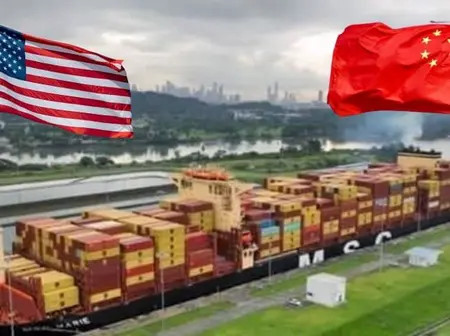China is advancing a bold infrastructure strategy in South America that could significantly alter global shipping dynamics and diminish U.S. influence in the Western Hemisphere. This is being executed under China’s Dual-Track plan.
According to a new report by Horizon Advisory, as covered by American Military News, Beijing is pushing a dual-track logistics corridor across Latin America. This is a combination of ports, railways, and logistics zones. It would allow Chinese goods to move between the Pacific and Atlantic Oceans without relying on the Panama Canal.
At the heart of this strategy is the development of the Chancay megaport in Peru. This is a deep-water Pacific gateway designed to accommodate ultra-large container ships. The port, which is being built with heavy Chinese investment — primarily from COSCO Shipping — is complemented by expansive logistics and industrial zones as part of China’s Dual-Track plan.
These facilities are intended to transform Peru into a major distribution hub for South America’s Pacific coast. They link it more closely to Chinese supply chains and manufacturing networks.
On the Atlantic side, China is promoting a bi-oceanic railway project that would run through Brazil. It connects the Pacific port of Chancay to the Atlantic coast. This rail corridor — sometimes referred to as the “Transcontinental Railway” — is designed to move bulk cargo such as soy, iron ore, and manufactured goods efficiently across the continent. This bypasses maritime chokepoints like the Panama Canal.
Together, these projects represent a dual-track strategy:
Physical Infrastructure — Combining ports and rail lines to physically move goods across the continent without transiting through U.S.-influenced maritime routes.
Geopolitical Influence — Cementing long-term economic ties with key Latin American countries through investment, trade, and debt diplomacy.
The Horizon Advisory study suggests this is not merely an economic development effort. Instead, it is part of a broader strategic play by Beijing to “redraw the logistics and economic map of the Americas.” By creating alternative trade corridors through China’s Dual-Track plan, China reduces its vulnerability to maritime chokepoints. This includes the Panama Canal or U.S.-controlled straits. Moreover, it increases its leverage in a region historically dominated by Washington.
The Port of Chancay began official commercial operations on June 5, 2025, after receiving its operating license from Peruvian President Dina Boluarte. The port was inaugurated on November 14, 2024. Its first phase is already in operation and serves as a key logistics hub for trade between South America and Asia.
The ability to dock these ships on the Pacific side of South America gives China a direct and efficient outlet for trans-Pacific trade, particularly with Asia.
The bi-oceanic railway, while still in planning and early development stages, has received interest and support from multiple South American governments. Its completion would drastically reduce the time and cost required to move commodities between Brazil. Brazil is one of the world’s top exporters of agricultural and mineral goods. This benefits markets across the Pacific Rim as envisioned in China’s Dual-Track plan.
For Washington, the implications are serious. China’s growing economic footprint in Latin America — through the Belt and Road Initiative and now through this dual-track logistics approach — could erode U.S. influence in its own geopolitical backyard. By building infrastructure that literally bypasses U.S.-favored trade routes, China is not just investing in development, but reshaping the rules of the global trade game.
As geopolitical competition between the U.S. and China intensifies, this ambitious infrastructure strategy underscores Beijing’s willingness to play the long game. This occurs not just in Asia or Africa, but increasingly in the Western Hemisphere.

Leave a Reply